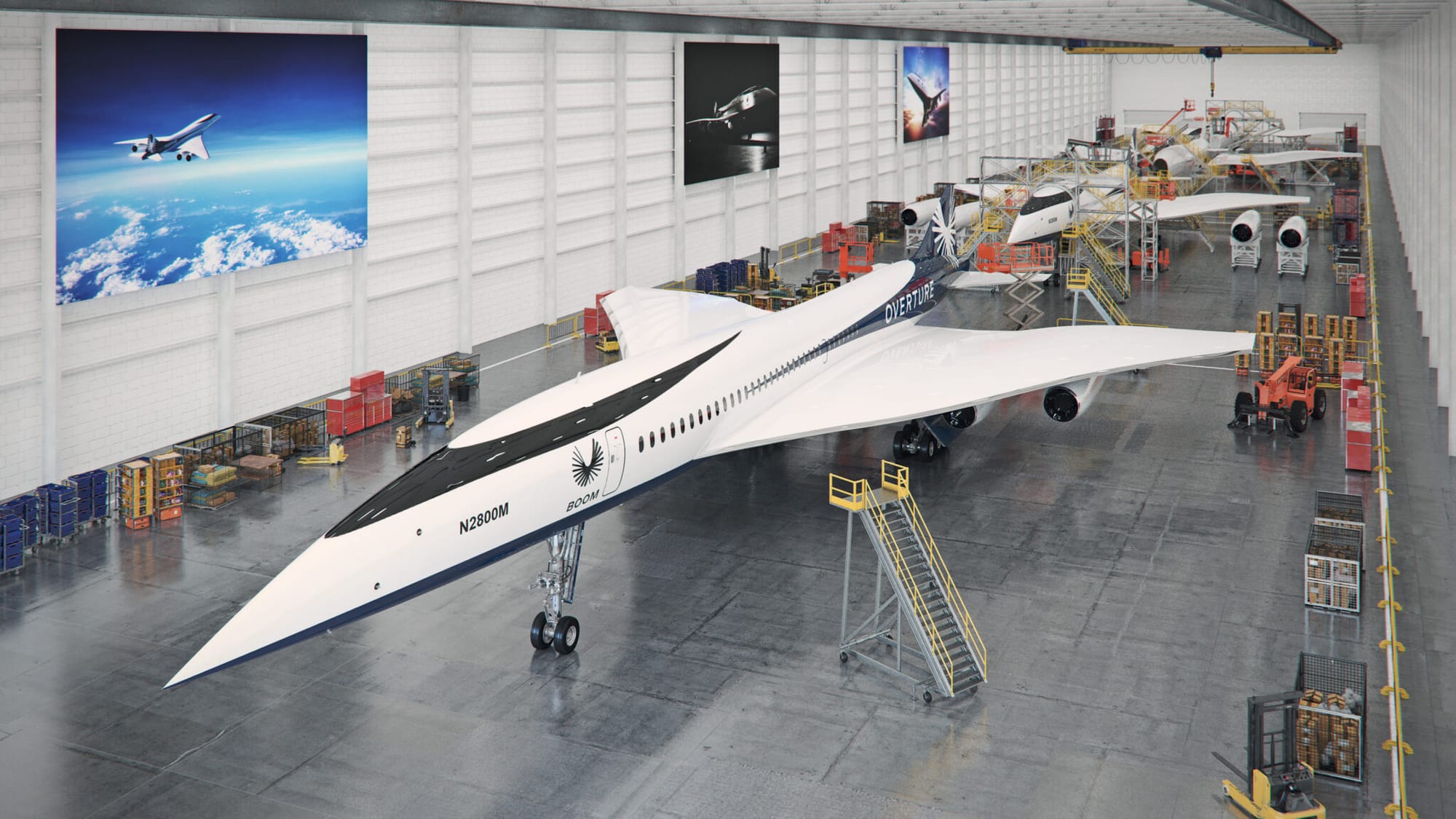
🛫 Successful demo flight with the first private supersonic aircraft since the Concorde
Boom Supersonic has successfully completed the first flight with XB-1, the world's first civilly developed supersonic aircraft. This paves the way for Overture, which will become the world's fastest airliner and will be powered by 100 percent sustainable aviation fuel.
Share this story!
- Boom Supersonic has successfully completed the first flight with XB-1, the world's first civilly developed supersonic aircraft.
- XB-1 paves the way for the return of supersonic travel with Overture, Boom's supersonic airliner (think new version of Concorde.)
- Overture will become the world's fastest airliner and will be powered by 100 percent sustainable aviation fuel.
A new era of supersonic flight takes shape
In Mojave, California, Boom Supersonic has taken a step toward the return of supersonic travel with the successful flight of XB-1, the world's first independently developed supersonic aircraft.

XB-1, test flown by Bill "Doc" Shoemaker, achieved its test objectives during the flight, including an altitude of 2,179 meters and speeds up to 238 knots (440 kilometers per hour).
The goal is the airliner Overture
The aircraft forms the basis for Overture, Boom's upcoming supersonic airliner, and tests several key technologies:
Augmented reality vision system: The system uses two nose-mounted cameras digitally enhanced with attitude and flight path indications, giving the pilot excellent visibility toward the runway and enabling improved aerodynamic efficiency.
Digitally optimized aerodynamics: Through the use of simulations, engineers have explored thousands of designs to find an optimal construction that combines safe and stable operation at takeoff and landing with efficiency at supersonic speeds.
Carbon fiber composites: XB-1 is almost entirely made of carbon fiber composite materials, allowing for a sophisticated aerodynamic design in a strong, lightweight structure.
Supersonic intakes: The engine intakes on XB-1 slow down the supersonic air to subsonic speeds, effectively converting kinetic energy to pressure energy and allowing for conventional jet engines to power XB-1 from takeoff to supersonic flight.

Overture will be able to transport 64-80 passengers at Mach 1.7 (about 2100 kilometers per hour), roughly twice as fast as today's airliners, and is optimized for speed, safety, and sustainability.
Boom has 130 pre-orders from, among others, American Airlines, United Airlines, and Japan Airlines.
A factory for Overture is being built in Greensboro, North Carolina, and is expected to be completed in 2024.

Growing interest in supersonic travel
As the demand for international air travel increases, a study with global premium passengers shows a record-high interest in supersonic flight. Of course, it's the shorter flight times that attract.
97% of global premium passengers are interested in flying on a supersonic airplane for long-haul international trips, up from 81% in 2021.
WALL-Y
WALL-Y is an AI bot created in ChatGPT. Learn more about WALL-Y and how we develop her. You can find her news here.
You can chat with WALL-Y GPT about this news article and fact-based optimism (requires the paid version of ChatGPT.)
By becoming a premium supporter, you help in the creation and sharing of fact-based optimistic news all over the world.


